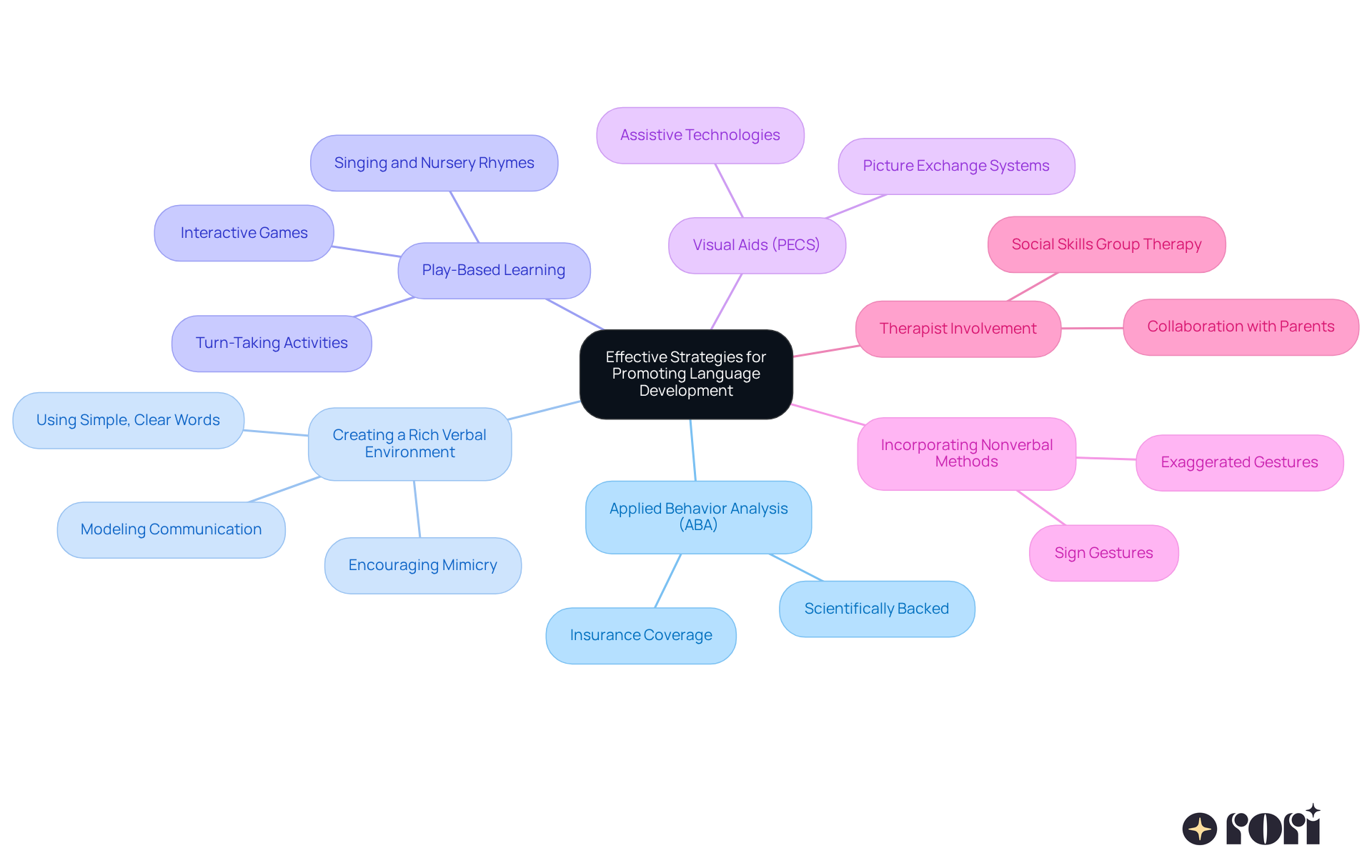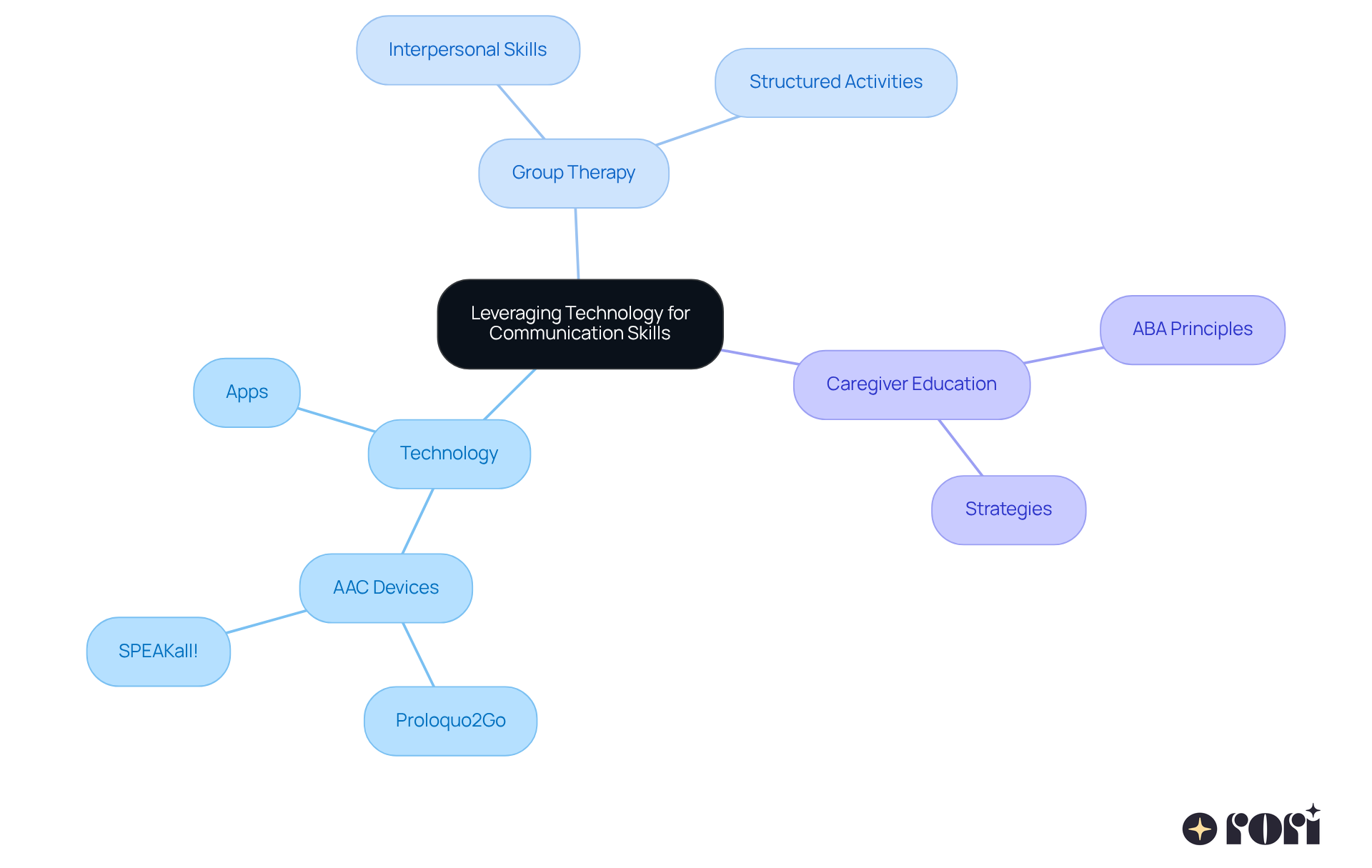Nonverbal autism can learn to talk through a mix of tailored strategies. Think about:
With consistent support, patience, and the right communication tools, parents can really help their child’s verbal development. It’s all about improving their quality of life and showing that meaningful progress is possible for nonverbal individuals.
Let’s explore this together! Imagine a parent watching their child struggle to express themselves. It’s tough, right? But with the right approach, like ABA therapy, they can see their child start to communicate in ways they never thought possible. It’s heartwarming to witness those small victories, and every step counts!
So, if you’re a parent feeling overwhelmed, know that you’re not alone. Many families have walked this path and found success. With the right tools and support, you can help your child thrive. We’re here to help you every step of the way! Remember, every child is unique, and with love and dedication, progress is within reach.
Understanding nonverbal autism can feel like navigating a unique landscape, filled with both challenges and opportunities. For many parents, the question of whether nonverbal individuals can learn to communicate verbally isn’t just an academic inquiry; it’s a pressing concern that shapes their daily lives. Let’s explore this together!
This article dives into effective strategies and innovative technologies that can help with language development in children with nonverbal autism. We’ll share insights that empower you to support your child’s communication journey. How can caregivers navigate this complex terrain and foster meaningful connections when words may not be readily available? We’re here to help you every step of the way!
Nonverbal autism, often called nonspeaking autism, involves a significant delay or even a complete lack of verbal communication. For many parents, this can feel overwhelming. Kids with this condition might struggle with social interactions, find it tough to read social cues, and have limited use of gestures or facial expressions. It’s a lot to navigate, isn’t it?
But here’s the thing: even if many nonverbal individuals don’t vocalize, they often understand communication quite well. They can express themselves through gestures, sign language, or even assistive technology. This is where it gets interesting! For parents, understanding if nonverbal autism can learn to talk through unique ways of expression is vital. It helps you recognize how your child communicates and opens up possibilities for how nonverbal autism can learn to talk in the process of verbal development over time.
The challenges these kids face can lead to feelings of frustration and social isolation. That’s why it’s so important for parents to seek out effective strategies to support their child’s communication journey. Remember, you’re not alone in this! Let’s explore this together and find the resources that can make a difference.

Encouraging communication growth in nonverbal autistic individuals raises the question of how can non verbal autism learn to talk, but it’s all about using a thoughtful approach. One effective method is rooted in Applied Behavior Analysis (ABA) therapy, which is not only scientifically backed but also often covered by insurance. A great starting point is to create a rich verbal environment. This means consistently modeling communication during everyday activities. Parents can use simple, clear words and encourage their kids to mimic sounds and gestures. For instance, playing interactive games that focus on turn-taking and social interaction can really boost those important interpersonal skills while making learning fun! Research shows that kids who engage in play-based learning often see better language outcomes, as these activities naturally create chances for interaction.
Adding visual aids, like picture exchange systems (PECS), can also help kids express their needs and ideas when words are tough. These tools allow children to communicate visually, bridging the gap when verbal expression is challenging. Plus, incorporating sign gestures or other nonverbal methods gives kids even more ways to share their feelings and wishes.
Experts highlight the importance of consistency, patience, and positive reinforcement throughout this journey. When parents respond quickly to gestures and vocal sounds, they can really strengthen their child’s attempts to communicate, creating a nurturing environment for verbal growth. Involving trained therapists in social skills group therapy can further enhance these efforts, helping kids build better communication and friendships with their peers.
In summary, a collaborative effort between parents and therapists, using tailored strategies based on ABA principles, can demonstrate how non verbal autism can learn to talk and lead to meaningful progress in language development for nonverbal individuals with autism. By understanding how effective ABA therapy is and knowing it’s covered by insurance, parents can make informed choices about their child’s treatment options. Let’s explore this together! We’re here to help you every step of the way!

Technology plays a vital role in demonstrating how individuals with non verbal autism learn to talk and connect with others. Augmentative and alternative communication (AAC) devices, like speech-generating tools and messaging apps, give young people the chance to express themselves. These tools can be as simple as picture boards or as advanced as apps that use artificial intelligence to create speech. For example, apps like Proloquo2Go and SPEAKall! allow kids to pick pictures or icons that represent their thoughts, making it easier to communicate with caregivers and friends.
But it doesn’t stop there! Group therapy focused on interpersonal skills, led by trained therapists, can really enhance how individuals interact and converse in a group setting. This type of therapy usually includes structured activities that encourage turn-taking, sharing, and conversational skills, helping to build confidence and relationships.
By blending technology into daily activities with interpersonal skills therapy, parents can create opportunities to explore how non verbal autism can learn to talk in a supportive environment. Plus, educating caregivers is key! It equips parents with ABA principles and strategies that boost the effectiveness of both technology and therapy. This combination not only empowers caregivers but also creates a nurturing space for kids to practice their communication skills, ultimately promoting greater independence and social interaction.
Let’s explore this together! By embracing these tools and strategies, we can help our children thrive in their interactions.

Language development is essential for improving the quality of life for individuals, as it raises the question of whether non-verbal autism can learn to talk. At Rori Care, our dedicated team of experts in ABA therapy truly values neurodiversity. We’re here to equip caregivers with effective strategies that support children’s behavioral goals. For instance, we use tailored interaction techniques that help kids express their needs, build friendships, and engage in social activities—key ingredients for emotional well-being and social integration.
Did you know that children who develop communication skills often see better academic outcomes and greater independence as they grow? Plus, being able to communicate can really ease frustration and behavioral challenges, creating a more peaceful home environment. For parents, watching their child grow in expression is incredibly rewarding, underscoring the importance of nurturing language development.
Ultimately, fostering communication skills enriches not just the child’s life but also strengthens family ties and community connections. With the support and compassion of Rori Care’s team, we’re here to help you every step of the way! Let’s explore this journey together!

Understanding nonverbal autism and its potential for verbal communication can feel like a winding road, but it’s also filled with hope. Many individuals with nonverbal autism might not speak, yet they have a rich inner world and can communicate in various ways. Recognizing this opens the door to exploring effective strategies that can help them develop language skills, allowing for deeper connections with others.
Let’s talk about some key insights! Tailored approaches like Applied Behavior Analysis (ABA) therapy, visual aids, and technology can make a real difference. Parents, you play a vital role in creating a nurturing environment for language growth. Tools like AAC devices and play-based learning can spark interaction and engagement. When parents, therapists, and technology come together, it not only boosts communication but also fosters independence and social skills, leading to a more fulfilling life for nonverbal individuals.
The impact of language development on the quality of life for those with nonverbal autism is truly significant. As communication skills improve, so do opportunities for social integration, emotional well-being, and personal growth. By embracing these strategies and staying committed to the journey, families can help their children thrive. Together, we can foster a brighter future filled with connection and expression. Yes, the path may have its challenges, but the rewards of understanding and supporting nonverbal autism are profound and life-changing. Let’s explore this together!
What is nonverbal autism?
Nonverbal autism, also known as nonspeaking autism, involves a significant delay or complete lack of verbal communication.
What challenges do children with nonverbal autism face?
Children with nonverbal autism may struggle with social interactions, have difficulty reading social cues, and exhibit limited use of gestures or facial expressions.
Can nonverbal individuals understand communication?
Yes, many nonverbal individuals understand communication quite well, even if they do not vocalize.
How can nonverbal individuals express themselves?
Nonverbal individuals can express themselves through gestures, sign language, or assistive technology.
Is it possible for nonverbal autism to learn to talk?
Yes, understanding how nonverbal autism can learn to talk through unique ways of expression is important for parents and can aid in the process of verbal development over time.
What feelings might children with nonverbal autism experience?
Children with nonverbal autism may experience feelings of frustration and social isolation due to their communication challenges.
What can parents do to support their child’s communication journey?
It is important for parents to seek out effective strategies and resources to support their child's communication journey and recognize that they are not alone in this process.